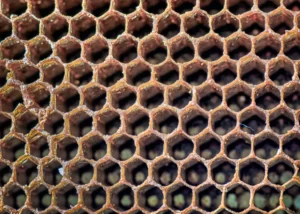Table of Contents
Manuka honey has gained attention for its potential benefits in managing diabetic foot ulcers (DFU), which can have serious consequences for individuals with diabetes. In this article, we will explore the effectiveness of Manuka honey dressing (HD) in the management of DFU through a meta-analysis study. We will examine the existing literature and discuss the findings related to wound healing rate and wound healing time.
Introduction
Diabetic foot ulcers (DFU) are a common complication of diabetes, leading to infection and lower extremity amputations. They have a significant impact on the quality of life and can be financially burdensome for individuals. While various strategies have been employed to treat DFUs, wound care plays a crucial role in their management. Honey dressing, specifically Manuka honey, has shown promise in promoting wound healing and preventing infection.
Literature Examination
A comprehensive literature examination was conducted until January 2023, resulting in the appraisal of 1794 linked studies. The selected studies included 882 subjects with DFUs, with 424 using HD and 458 using a control. The effect of HD on DFUs was assessed using odds ratio (OR) and 95% confidence intervals (CIs) through dichotomous and continuous styles with fixed or random models.
Results
The analysis revealed that HD applied to DFUs resulted in a significantly higher wound healing rate (OR, 2.06; 95% CI, 1.45‐2.93, P < .001) and lower wound healing time (MD, −10.42; 95% CI, −16.27‐ −4.58, P < .001) compared to the control. These findings suggest that HD can effectively promote wound healing in DFUs.
Discussion
DFUs can have severe consequences for individuals with diabetes, leading to infection and amputations. The clinical efficacy of various strategies for treating DFUs, including HD, is still subpar. However, the meta-analysis conducted in this study provides evidence supporting the use of HD in managing DFUs.
Manuka honey, with its acidic pH and high osmolality, has antibacterial properties that can prevent microbial reproduction and limit the growth of germs. It also contains hydrogen peroxide, which fights infection and aids in wound healing. Additionally, honey can stimulate macrophages and enhance the activity of B- and T-lymphocytes, promoting wound healing and antibacterial activity. The broad-spectrum antibacterial activity of honey makes it effective against various bacterial strains.
Conclusion
The meta-analysis study confirms the effectiveness of HD in promoting wound healing and reducing healing time in DFUs. While the findings are promising, it is important to consider the limitations of the included studies, such as small sample sizes. Further research with larger and more homogeneous samples is needed to validate these findings and explore the potential impact of variables such as gender, ethnicity, and age on the effectiveness of HD in managing DFUs.
In conclusion, Manuka honey dressing shows promise as an intervention for the management of DFUs. Its antibacterial properties, stimulation of immune response, and wound healing promotion make it a valuable addition to the treatment of DFUs. Further research is needed to delve deeper into the potential benefits and optimize the use of Manuka honey in managing DFUs.



